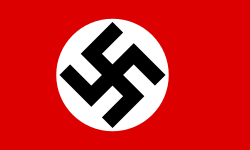| Germany at the 1936 Summer Olympics | |
|---|---|
 | |
| IOC code | GER |
| NOC | German Olympic Sports Confederation |
| Website | www |
| in Berlin 1–16 August 1936 | |
| Competitors | 433 (389 men and 44 women) in 22 sports |
| Flag bearer | Hans Fritsch |
| Medals Ranked 1st |
|
| Summer Olympics appearances (overview) | |
| Other related appearances | |
| 1906 Intercalated Games –––– | |
Germany was the host nation and top medal recipient at the 1936 Summer Olympics in Berlin. 433 competitors, 389 men and 44 women, took part in 143 events in 22 sports. [1]
Contents
- Medalists
- Gold
- Silver
- Bronze
- Athletics
- Basketball
- First round
- Second round
- Second consolation round
- Boxing
- Canoeing
- Cycling
- Diving
- Equestrian
- Fencing
- Field hockey
- Group B
- Semi-finals
- Gold medal match
- Football
- First round 2
- Quarter-finals
- Gymnastics
- Handball
- Preliminary round
- Final round
- Modern pentathlon
- Polo
- Rowing
- Sailing
- Shooting
- Swimming
- Water polo
- Weightlifting
- Wrestling
- Art competitions
- References
- External links
The total of 33 gold and 89 total medals still stands as a record medal tally for unified Germany. [2]